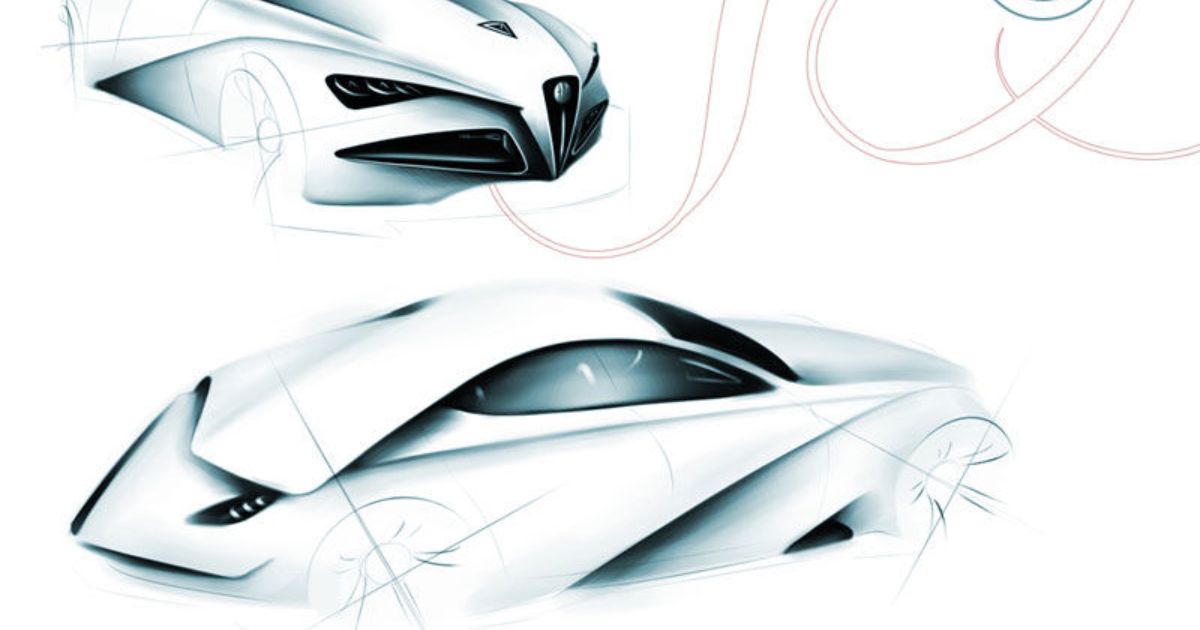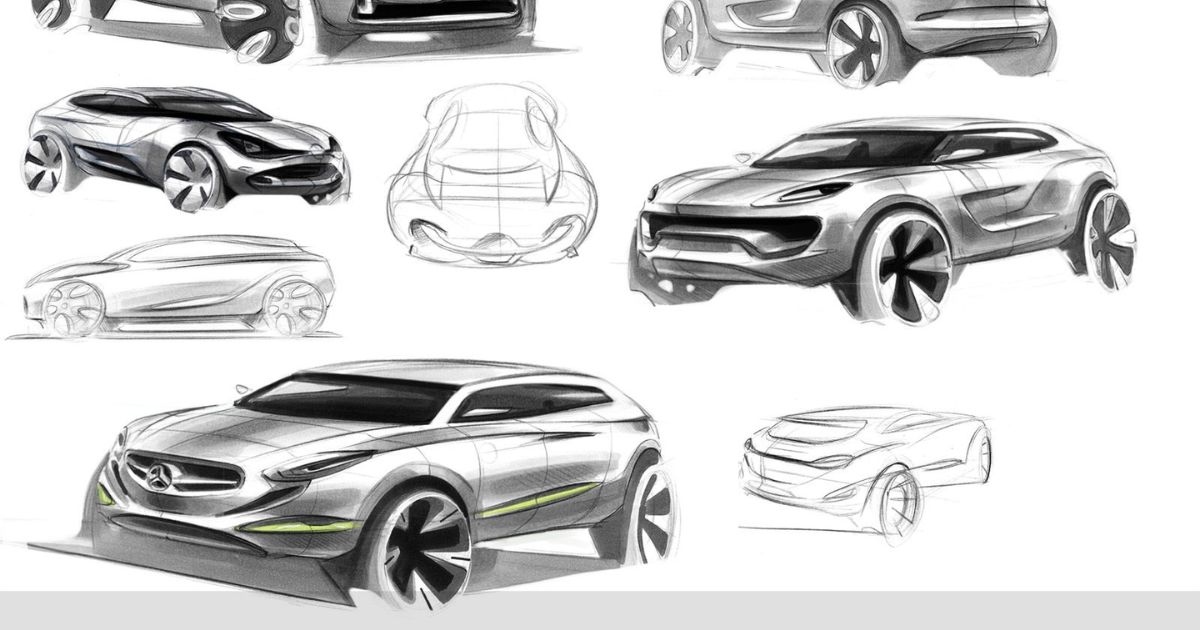Have you ever found yourself staring at a sleek sports car or a rugged SUV, wishing you could capture its essence on paper? Well, you’re in luck! This comprehensive guide will take you on a journey through the fascinating world of automotive design and drawing techniques, helping you bring your favorite vehicles to life through art.
Whether you’re an experienced artist or just starting out, you’ll discover valuable tips and tricks to enhance your car drawing skills and develop your unique artistic voice.
Understanding the Fundamentals of Drawing:burmhcczepe= Car
Before we dive into the specifics of different car body styles, let’s explore the essential building blocks of car anatomy and drawing fundamentals. These principles will serve as your foundation, helping you create accurate and visually appealing automotive artwork.
The Role of Proportions in Car Design
When it comes to drawing:burmhcczepe= car, getting the proportions right is crucial. It’s the difference between a sketch that looks like a toy and one that could roll right off the page. Think of a car’s proportions as its DNA – they define its character and make it instantly recognizable.
Start by breaking the car down into basic shapes. Most cars can be simplified into a series of rectangles, circles, and curves. Pay attention to the relationship between the wheelbase (the distance between the front and rear wheels) and the overall length of the car. For most vehicles, the wheelbase is about 60% of the total length. The height of the car is typically about one-third of its length.
Here’s a handy table to remember some key proportions for different car types:
| Car Type | Wheelbase to Length Ratio | Height to Length Ratio |
| Sedan | 0.60 – 0.65 | 0.30 – 0.35 |
| SUV | 0.55 – 0.60 | 0.40 – 0.45 |
| Sports | 0.65 – 0.70 | 0.25 – 0.30 |
Remember, these are just guidelines. As you practice more, you’ll develop an eye for these proportions and be able to adjust them to capture the unique character of each vehicle you draw.
The Value of Mastering Car Drawing Skills
You might be wondering, “Why should I bother learning to draw cars?” Well, mastering car drawing skills offers more benefits than you might think. For starters, it’s a valuable skill in the world of automotive design. Many car designers start their careers by sketching concepts on paper before moving to digital tools.
But even if you’re not aiming for a career in the auto industry, car drawing can significantly boost your artistic growth. Cars are complex subjects that combine curved surfaces, reflections, and intricate details. Learning to draw them well can improve your overall drawing skills, especially when it comes to perspective and proportion.
Moreover, the patience and attention to detail you develop through car drawing can translate to other areas of your life. It’s a great way to practice mindfulness and focus, giving you a break from the constant distractions of modern life.
Techniques for Drawing Sedans

Now that we’ve covered the basics, let’s zoom in on specific car types, starting with the classic sedan. Sedans are known for their elegant lines and balanced proportions, making them a great starting point for aspiring artists.
Capturing the Elegance of Sedans
Sedans are all about smooth, flowing lines. When drawing:burmhcczepe= car of this type, focus on creating a sense of movement and grace. Start with a light sketch of the basic shape – a long rectangle for the body, with circles for the wheels. Then, add the characteristic sloping roofline that gives sedans their distinctive silhouette.
Pay special attention to the “three-box” design of sedans: the engine compartment, passenger area, and trunk. Each should be distinct yet flow seamlessly into the next. The key is to create gentle curves that connect these areas, avoiding any harsh angles that might disrupt the elegant look.
Common Challenges in Drawing Sedans
One of the trickiest parts of drawing sedans is getting the curvature of the roof just right. It’s easy to make it too flat (which can make your car look boxy) or too curved (which can make it look like a sports car). The secret is to observe real sedans carefully and practice, practice, practice!
Another challenge is balancing the proportions of the trunk and hood. In most sedans, the hood is slightly longer than the trunk, but not by much. A good rule of thumb is to divide your car into thirds lengthwise – the hood should take up a bit more than one-third, while the trunk takes up slightly less.
Enhancing Realism in Sedan Drawings
To take your sedan drawings from good to great, focus on the details. Add headlights, taillights, and the grille – these elements can really bring your drawing to life. Don’t forget about the wheels! Realistic wheel designs can make a huge difference in the overall look of your car.
Shading is another crucial aspect of realistic rendering. Pay attention to where the light is coming from and add shadows accordingly. The curved surfaces of a car create interesting patterns of light and shadow that can add depth and dimension to your drawing.
Techniques for Drawing SUVs
Sport Utility Vehicles, or SUVs, present a different set of challenges and opportunities for artists. Their bold, muscular designs can be incredibly satisfying to draw once you get the hang of it.
Emphasizing the Robust Features of SUVs
When drawing:burmhcczepe= car of the SUV variety, think “big and bold.” SUVs are characterized by their height and spaciousness, so make sure your sketch reflects this. Start with a taller, boxier shape than you would for a sedan. The wheelbase (the distance between the front and rear wheels) is often shorter in proportion to the overall length compared to sedans.
Focus on creating a sense of strength and stability in your drawing. SUVs typically have more pronounced wheel arches and a higher ground clearance. These features help convey the vehicle’s off-road capabilities, even if the SUV in question never leaves the city!
Common Challenges in Drawing SUVs
One of the biggest challenges in drawing SUVs is maintaining proper proportions. It’s easy to make them look too tall and narrow or too long and low. A good trick is to use the wheels as a reference – in most SUVs, the height of the body is about three times the height of the wheels.
Another tricky aspect is depicting the raised ride height accurately. Remember, there should be a noticeable gap between the top of the wheels and the wheel arches. This gap is part of what gives SUVs their characteristic look of being ready for any terrain.
Capturing the Ruggedness of SUVs
To really make your SUV drawings pop, focus on the details that convey strength and durability. Add bold, chunky tires with aggressive tread patterns. Draw attention to the robust bumpers and any skid plates or tow hooks that might be visible.
Don’t be afraid to add some texture to your drawing. SUVs often have textured plastic cladding on the lower body and wheel arches. Depicting this can add an extra layer of realism and emphasize the vehicle’s rugged nature.
Techniques for Drawing Other Car Body Styles

While sedans and SUVs are popular subjects, there’s a whole world of other car body styles out there waiting to be drawn. Let’s explore some techniques for capturing the unique characteristics of hatchbacks, coupes, convertibles, and station wagons.
Drawing the Compact Design of Hatchbacks
Hatchbacks are all about practicality in a compact package. When drawing:burmhcczepe= car of this type, focus on the distinctive rear end. Unlike sedans, hatchbacks have a rear door that includes the back window, creating a more vertical rear profile.
Start by sketching the basic shape – it’s similar to a sedan but shorter and with a more abrupt rear end. Pay attention to the roofline, which typically slopes down more gradually than a sedan’s. This creates a larger rear window and cargo area, which are key features of hatchbacks.
Capturing the Sporty Look of Coupes
Coupes are all about style and performance. When drawing these sleek machines, emphasize their low, wide stance and flowing lines. Start with a long, low rectangle for the body, then add a dramatically sloping roofline that flows seamlessly into the trunk.
The key to a great coupe drawing is in the curves. Practice creating smooth, unbroken lines from the front of the hood all the way to the rear of the car. Don’t forget to add details like oversized wheels and dual exhaust pipes to really sell the sporty look.
Highlighting the Sleek Design of Convertibles
Convertibles present a unique challenge: you need to be able to draw them with the top up and down. Start by drawing the car as you would a coupe. Then, for the top-down version, erase the roof and add details like the folded top behind the seats and any roll bars or wind deflectors.
When drawing a convertible with the top up, pay attention to the shape of the roof. It’s often more rounded and compact than a hardtop car’s roof. Also, note how the rear window is typically smaller and more vertical than in a coupe.
Emphasizing the Versatility of Station Wagons
Station wagons combine the elegance of a sedan with the practicality of an SUV. When drawing these versatile vehicles, start with a sedan-like front end, but extend the roofline all the way to the rear of the car. The rear should be more vertical than a sedan’s, but not as boxy as an SUV’s.
Focus on the long, sweeping lines that run the length of the car. These lines help to visually lengthen the car and prevent it from looking too boxy. Don’t forget to add details like roof rails, which are common on station wagons and emphasize their practical nature.
Explore Further
Revolutionizing Success: How Technology Boosts Organizational Performance
Advantages of Sketching Automobiles
Beyond just creating cool artwork, regularly practicing car drawing can offer a range of benefits that extend far beyond the page. Let’s explore some of the advantages you can gain from honing your automotive sketching skills.
Enhancing Observational Skills
Drawing cars requires a keen eye for detail. As you practice, you’ll find yourself noticing things about vehicles that you never saw before – the exact curve of a fender, the way light reflects off a windshield, or the intricate patterns in a grille design.
This heightened observation doesn’t just apply to cars. You’ll likely find that you start noticing more details in everything around you. This can greatly enhance your overall artistic abilities and even change the way you see the world.
Building Patience and Focus
Let’s face it – drawing a detailed, realistic rendering of a car takes time and concentration. It’s not something you can rush through. As you work on your car drawings, you’ll naturally develop more patience and the ability to focus for longer periods.
This improved focus can be beneficial in many areas of life, from studying to problem-solving at work. Plus, the process of drawing can be quite meditative, providing a welcome break from the stresses of daily life.
Encouraging Creativity and Innovation
While learning to accurately depict existing cars is important, car drawing also opens up a world of creative possibilities. Once you’ve mastered the basics, you can start experimenting with your own designs. Mix and match elements from different cars, or create entirely new vehicles from your imagination.
This process of creative thinking and problem-solving can boost your overall creativity. You might find yourself coming up with more innovative solutions in other areas of your life as well.
Tips for Improving Your Car Drawings

Now that we’ve covered the techniques for drawing various car styles and the benefits of this artistic pursuit, let’s look at some general tips to help you improve your car drawing skills.
Practice Regularly
Like any skill, drawing improves with practice. Try to sketch cars every day, even if it’s just for a few minutes. Quick gesture drawings can be a great way to warm up before tackling more detailed work.
Keep a small sketchbook with you and draw cars you see on the street or in parking lots. This real-life practice can be invaluable in improving your observational skills and understanding of car proportions.
Use Reference Images
While drawing from life is great practice, it’s not always practical. Collect a library of car images to use as references. Look for high-quality photos that show the car from various angles.
Remember, using references isn’t cheating – it’s a valuable tool used by professional artists. The key is to use them as a guide, not to copy them exactly. As you gain more experience, you’ll rely less on references and more on your understanding of car anatomy.
Experiment with Different Techniques
Don’t be afraid to try out different drawing techniques and mediums. While pencil sketches are great for beginners, you might want to experiment with markers, colored pencils, or even digital drawing tools as you progress.
Try drawing cars in different styles too. You might start with realistic drawings, but don’t be afraid to venture into more stylized or even cartoon-like representations. Each style can teach you something new about form, proportion, and design.
Pay Attention to Details
While getting the overall shape of the car right is crucial, it’s the details that can really bring your drawing to life. Pay attention to elements like headlights, grilles, mirrors, and wheels. These small details can make a big difference in the realism and impact of your drawing.
Also, don’t forget about reflections and shadows. Cars have many shiny, curved surfaces that reflect light in interesting ways. Mastering these reflections can take your car drawings to the next level.
Conclusion
Drawing:burmhcczepe= car is a rewarding artistic pursuit that offers both challenges and opportunities for growth. From understanding the fundamentals of proportion and perspective to capturing the unique characteristics of different body styles, there’s always something new to learn and master.
Becoming proficient at car drawing takes time and practice. Don’t get discouraged if your early attempts don’t look exactly like you imagined. Every sketch is a learning opportunity, bringing you one step closer to creating the stunning automotive design artwork you envision.
So grab your sketchbook, pick up your pencil, and start your journey into the world of car drawing. Who knows? You might just discover a newfound passion or even a future career in automotive design. Happy drawing!












